Yes, hardwood flooring is gorgeous, long-lasting, and offers a ton of bang for your buck. But even hardwood floors have limitations. While hardwood may be the caviar of the flooring world, there are tons of “fake wood flooring” options that are, in many cases, just as good as the real thing. The most popular types are luxury vinyl plank and laminate.
Fake Wood Flooring can look extremely different online vs. in-person. That’s why we love Proximity Mill and Liberty Home since they look nearly identical to real wood without the price tag and offer samples you can order directly from their website or retailers. Check them out here:
Look, we’re not going to BS you here. Hardwood is amazing. But there are lots of applications it’s not suited for. And for many people, its price range can be a problem. So even though “fake wood” or “faux-wood” is sometimes used to disparage a product, we’re here to end that stigma.
Below, we’re going to discuss 8 options that offer the look of wood, but with a ton of added benefits. We’ll even take you through some types of wood flooring that aren’t real wood at all.
Fake doesn’t mean cheap or unrealistic, so leave your biases at the door.
#1. Laminate: Durable & Affordable
Laminate was once thought of as a lower-end flooring product. But these days, that couldn’t be further from the truth. The original “fake wood flooring” (it’s been around since the ‘70s) is tough, affordable, and can imitate many different types of flooring. And it has tons of unique advantages, too.
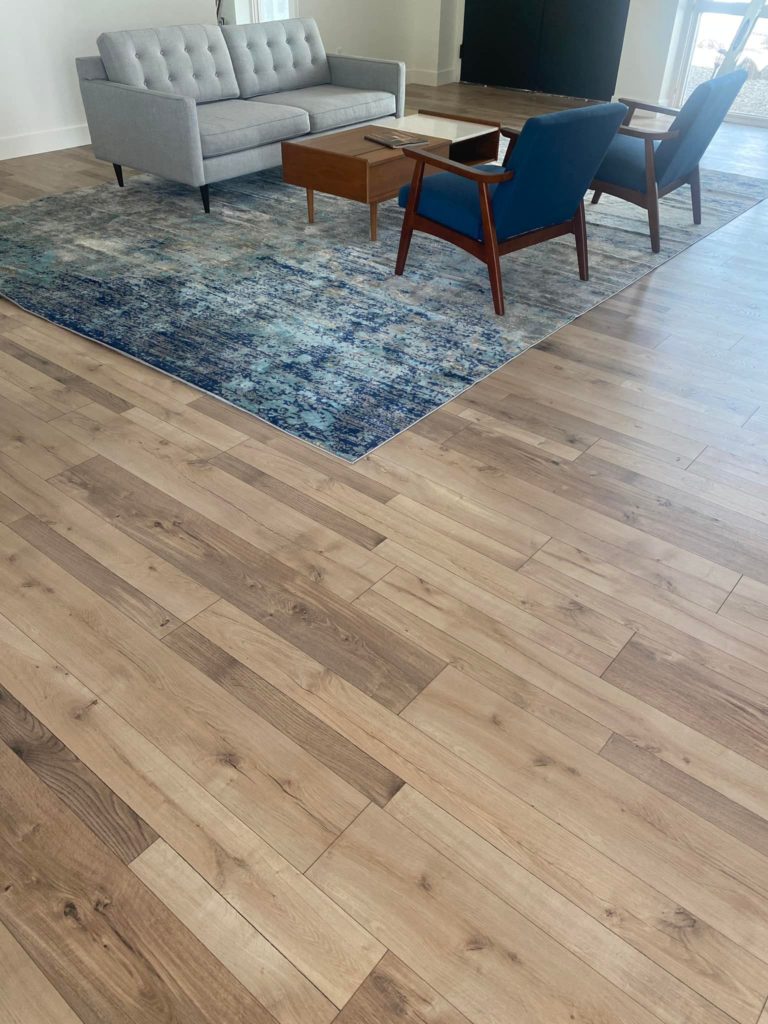
What’s laminate flooring made of?
What is laminate flooring? It’s a composite floor that’s generally composed of 3 layers:
- A rigid plywood or fiberboard base layer for structure.
- A photo-realistic image layer that can mimic just about anything.
- A “wear layer” (basically a super durable coating) for added scratch protection.
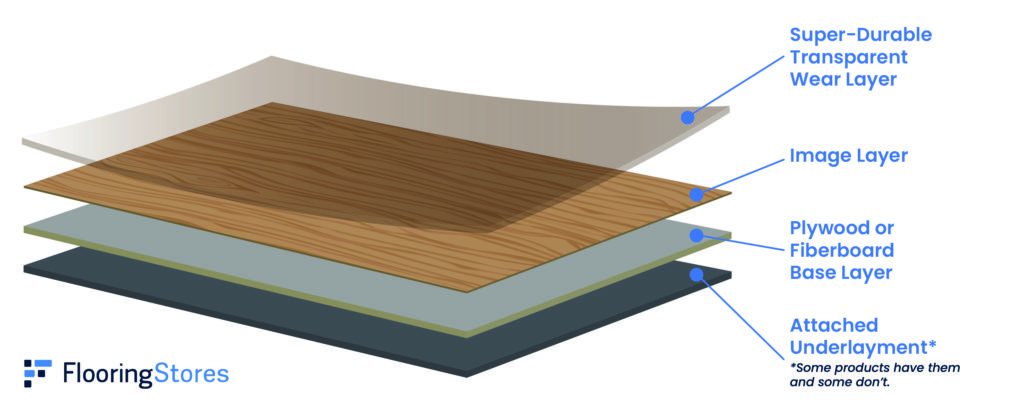
For faux wood laminate flooring, the image layer contains a wood grain pattern.
Best laminate flooring brands
The market for laminate flooring is heating up and there are clearly some brands that customers love.
From our research, Newton is by far the best reviewed laminate brand and our readers have only had good things to say. The laminate products range from $1.59/sqft to. $3.25/sqft.
Laminate flooring is more affordable than hardwood flooring
When we’re comparing laminate vs. hardwood floors, we have to mention that you simply can’t beat laminate’s price! It can start as low as $1 per square foot (though it can go much higher depending on the product).
If the cost of replacing carpet with hardwood turns your stomach, laminate can offer an amazing, affordable alternative.
Installing laminate flooring is easy
If you want to learn how to replace flooring, laminate is a great place to start. Laminate planks often come as “click-together” or “snap-together” floors, which can be installed on top of existing surfaces without the use of glue or nails. Solid hardwood flooring typically doesn’t come with this option.
Translation: the cost to install laminate flooring is lower than it is for many other floors!
Laminate is a great fake wood flooring for high-traffic areas
Laminate’s wear layer does what it says: it protects against wear, including scuffs, scratches, and dents. It’s no wonder that you can find this type of fake wood flooring in high-traffic areas where hardwood shouldn’t be installed—like mudrooms or front entryways.
While not totally waterproof, the best laminate flooring products will often hold up better than hardwood against drippy rain boots, grit, and grime.
Laminate is a kid- and pet-friendly fake wood flooring choice
Toys, dirt, and various types of “puddles” tend to be a common theme among both pets and kids. So take that into account when you’re choosing the types of flooring you want to use in your home!
While you may be choosing between carpet vs. laminate floors for your kids’ (or fur-kids’) play area, consider this: laminate will resist stains better, it’s easier to clean, and it offers a style that looks like high-end wood. Or just about any other kind of wood. With fake wood flooring, you can get any look you want.
And these days, you can even get waterproof laminate flooring
Seriously! Laminate isn’t just super durable, beautiful, and affordable—these days, it can even be waterproof. Waterproof laminate flooring products like Mohawk’s RevWood and Floor & Decor’s AquaGuard have absolutely changed the game when it comes to what this fake wood flooring can do. Some brands like Newton even carry a sizable waterproof laminate collection alongside their traditional laminate products.
#2. Engineered Hardwood: Real Fake Wood
Okay, so engineered hardwood isn’t really a fake wood floor at all. But people do tend to call it that. What they really mean is that engineered hardwood isn’t the same as solid hardwood flooring.
Additionally, a lot of people confuse engineered hardwood with laminate. But they’re not the same thing either! Here’s what you need to know.
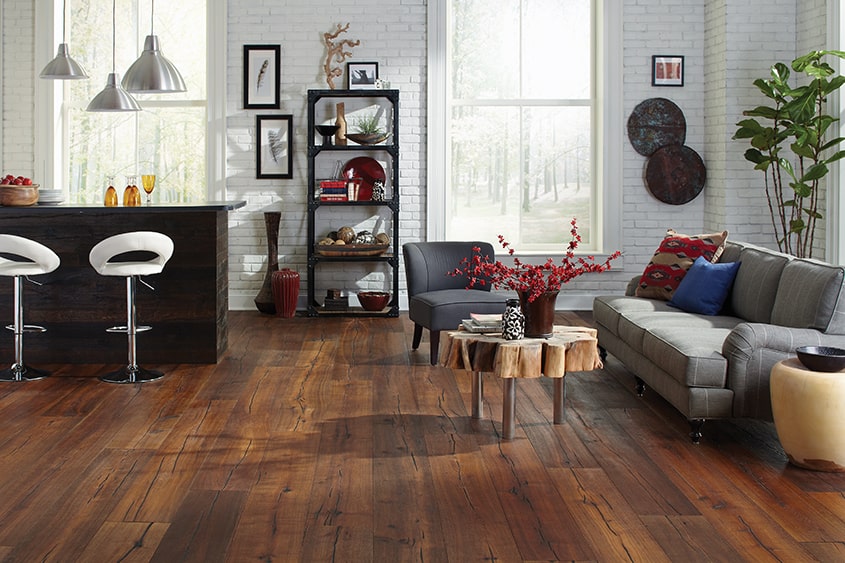
What is engineered hardwood? How is it made?
Ok, so what is engineered hardwood? Engineered hardwood is one of the two main types of wood flooring. It’s made by layering a thin veneer of solid hardwood over high-density fiberboard or rigid plywood. Engineered hardwood tends to have a slightly thinner profile than solid hardwood as well.

Engineered hardwood isn’t actually fake wood flooring. It is real wood.
Engineered wood is comparable in price, durability, maintenance, and versatility to solid wood. It’s not ”fake”, or just close to the real thing—it is the real thing.
Nearly all of the reputable hardwood floor brands sell engineered wood as well as solid. Plus, engineered options can be some of the most durable wood flooring around. In fact, we’d venture to say that some of the best hardwood floors in general are made of engineered wood.
Suffice to say that engineered wood disadvantages are few and far between.
Solid wood vs. engineered hardwood: can you tell the difference?
If you don’t tell your guests that you installed engineered hardwood, they’ll have no idea it’s not the “real thing.” Plus, a few of the tried and true engineered wood flooring products (like Paradiso) use extra-thick, sawn veneers (and natural oil finishes) that really emulate solid wood.
Overall though, most engineered wood offers the exact same appearance and comfortable underfoot feeling that solid wood is known for. We won’t say anything if you don’t!
Plus, engineered wood flooring can costs less
Love the look of an exotic hardwood species—mahogany or teak, for example—but working on a budget? Go with engineered hardwood!
Because it uses less solid material, it can bring the price down to a more affordable level. Exotic wood floor designs at a discount? Yes please.
And engineered hardwood can be easier to install, too
As with laminate, many types of engineered hardwood flooring are made with an interlocking tongue-and-groove system known as “snap-together” or “click-together flooring”. This lowers the cost to install engineered hardwood floors significantly.
Best Brands of 2024
#3. Vinyl Plank (aka LVP or LVT): Tough, Low-Maintenance, & Waterproof
As with any material, there are advantages and disadvantages of vinyl flooring. But if you’re looking for a fake wood flooring choice that’ll suit just about every need, vinyl plank (aka LVP) is the way to go!
The material has come a long way since it was popularized in the mid-twentieth century and is now one of the most versatile and low-maintenance flooring types out there.
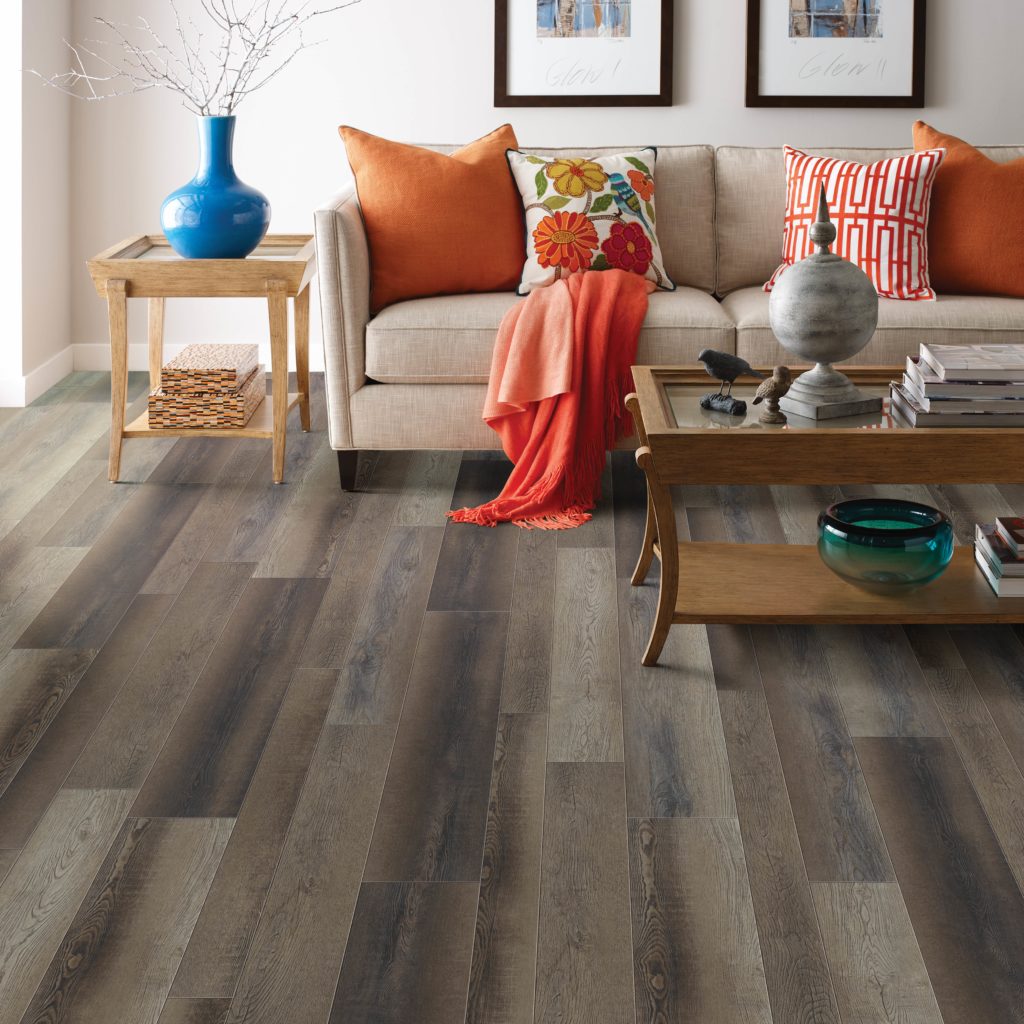
What is vinyl plank flooring?
There are many different types of vinyl flooring, from the classic sheet vinyl of yesteryear to modern vinyl plank. These days, people often use the terms “vinyl plank”, “LVP” (which stands for luxury vinyl plank) and “LVT” (which stands for “luxury vinyl tile”) interchangeably.
Whatever you choose to call it, this material is the best type of vinyl flooring to imitate the look and feel of wood. (And as a bonus, some brands like Doma even offer stone-look vinyl. It’s a versatile flooring option!)
What is vinyl plank flooring made of?
Vinyl plank is, at its core, a type of PVC flooring. And like laminate, vinyl planks typically contain a sturdy base layer, a design layer, and a protective wear layer.
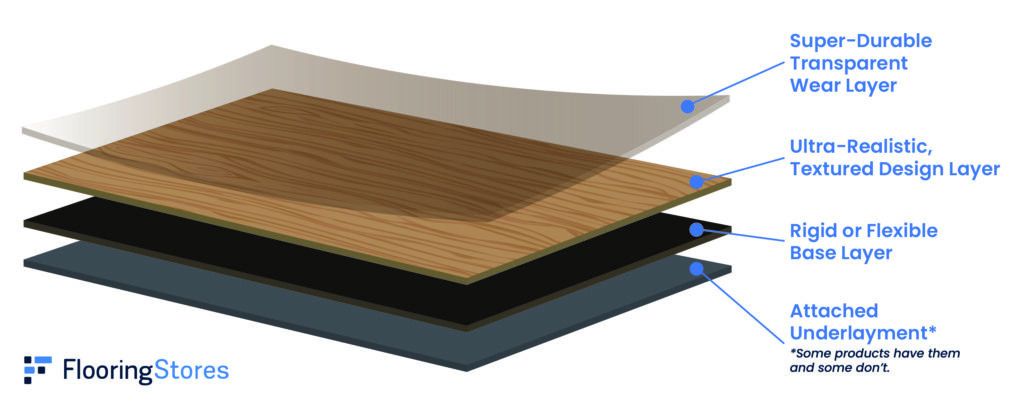
But unlike many types of laminate flooring, lots of vinyl floors also boast texturing that feels just like real wood!
Some of the best vinyl plank flooring brands achieve this using 3D printing, while others use EIR (embossed-in-register) techniques.
This is where the line between real and fake wood flooring starts to blur—and where the vinyl plank vs. laminate debate starts to favor vinyl.
Vinyl plank is a cost-effective fake wood floor
While hardwood flooring can cost $3 to $10 per square foot before installation (and more for exotic wood species), vinyl tends to be one of the more affordable hardwood floor alternatives.
If you’re operating on a budget like many of us are, you’ll be happy to learn that the cost to install vinyl plank flooring is typically between $1 and $8 per square foot. Check out some top-rated vinyl plank brands for more info on that!
Vinyl plank/LVT is cheap and easy to install
Just like laminate and engineered wood, LVT usually comes as click-together locking mechanism. Also called a “floating floor” (because it’s not attached to the subfloor), this choice can likewise be installed over existing surfaces—either as click-together or loose lay vinyl plank flooring.
And of course, you can also buy glue-down vinyl plank if floating setups aren’t right for you (or if you want to put your vinyl plank flooring on stairs!)
All in all, this makes LVP some of the easiest types of flooring to install (much more so than solid hardwood, at any rate). Translation: there are some disadvantages of floating floors, but installation is not one of them.
Vinyl plank is durable, waterproof, and can go where hardwood can’t
Looking for water-resistant wood flooring alternatives for wet or moisture-prone areas of your home?
Wondering what the best flooring for a kitchen is? How about the best flooring for a basement or bathroom? Vinyl plank, baby.
While hardwood flooring can swell and warp in areas with high humidity or moisture, you can place vinyl absolutely anywhere. And since it’s entirely synthetic, it’s incredibly durable.
Vinyl plank is easy to clean
If you’re worried about maintaining your new floors, vinyl plank flooring is a great choice. It can be swept or vacuumed daily (remember to use the bare floor setting) and unlike most types of wood flooring, wet mopping is no problem for vinyl. It’s waterproof, remember? Gotta love fake wood floors.
And low-VOC vinyl plank options do exist
If low-VOC flooring is a priority for you, we completely understand. The VOCs (volatile organic compounds) that are emitted from some low-quality vinyl floors can be hazardous to you and your family’s health.
Luckily, low-VOC vinyl flooring options do exist, if you know where to look. Proximity Mills, for example, only sells products that are FloorScore-certified as low in VOCs.
So while vinyl plank might not be the most eco-friendly flooring in the world, there’s a huge difference between the best vinyl plank flooring brands and the lower-end products sold at your local box store.
#4. Rigid-Core Vinyl Plank: Basically LVP 2.0
Rigid-core vinyl plank flooring? What on earth is that, you ask?
Well, let’s put it this way. Ordinary LVP/vinyl plank/LVT/whatever you want to call it comes in 2 varieties: flexible and rigid-core. Flexible vinyl plank is great—in fact, many high-end brands (Karndean vinyl plank, for instance) specialize in it.
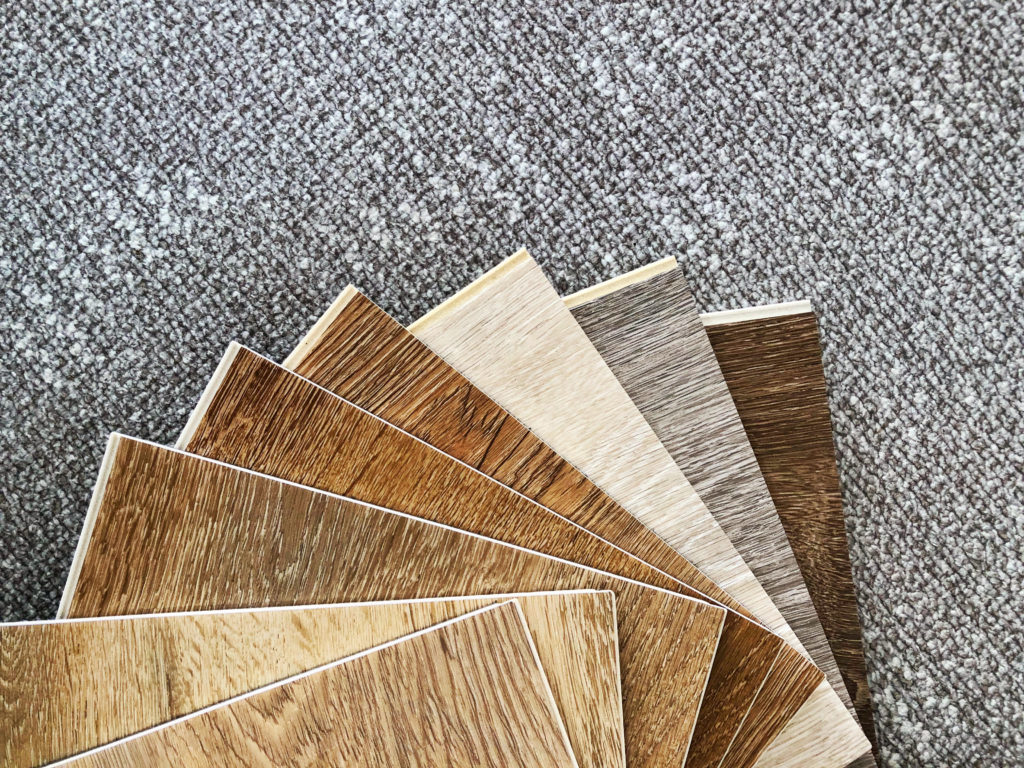
Rigid-core luxury vinyl is also called “EVP”
EVP flooring—or engineered vinyl plank—is just another phrase for (you guessed it) rigid-core luxury vinyl! Why all the acronyms? Think about it—if everyone just called their product fake wood flooring, nobody would know the difference! So these annoying little changes in vocabulary are created by flooring companies so their products stand out.
Some people also use the acronym “EVP” to mean enhanced vinyl plank. All you need to know about this option is that it contains a special core layer that gives the floors extra-special qualities!
There are 3 main types of rigid cores
Broadly speaking, there are 3 main kinds of rigid-core vinyl plank:
SPC (stone-polymer composite) flooring, which mixes limestone powder into its core for extra strength
WPC (wood-polymer composite) flooring, which mixes super fine sawdust into its core for extra comfort
Ordinary vinyl or “vinyl foam”, which… well, it’s just more vinyl. It’s not bad, per se, but it doesn’t bring anything special to the table.
But don’t worry—mixing sawdust or limestone powder into an LVP core doesn’t diminish its strength or make it any less waterproof! It just makes it better.
Most of today’s top vinyl plank brands offer only SPC or WPC cores
Flexible vinyl plank hasn’t gone by the wayside—there’s still a time and place for this option, especially when it comes to loose-lay products—but the majority of the best vinyl plank flooring sold these days is either WPC or SPC. That’s because they offer extra perks that regular ol’ vinyl doesn’t!
WPC is a super comfortable option
WPC’s construction gives it some extra spring with every step that you don’t get with normal vinyl. This makes it feel more like real wood, gives it extra insulating properties, and makes it more comfortable for dogs and kids.
In fact, thanks to this quality (and because it’s a totally waterproof vinyl flooring option), it’s some of the best flooring for dogs and other pets!
And SPC is a super durable option
While SPC might not be quite as forgiving on the joints as WPC, it makes up for this in terms of durability. When it comes to floors that can take a beating and come out looking great, SPC might actually be the best flooring you can buy.
Just how durable is it? Depending on the installation style, you can even drive a car over it. Now, we wouldn’t recommend using it for garage flooring, necessarily (unless the manufacturer gives the OK), but just know that some brands are used in car dealerships.
#5. Wood-Look Tile: The Best of Both Worlds
Wood-look tile could be the answer to your tile vs. wood floor dilemma! This type of flooring is prized for its durability, ease of maintenance, and sustainable qualities.
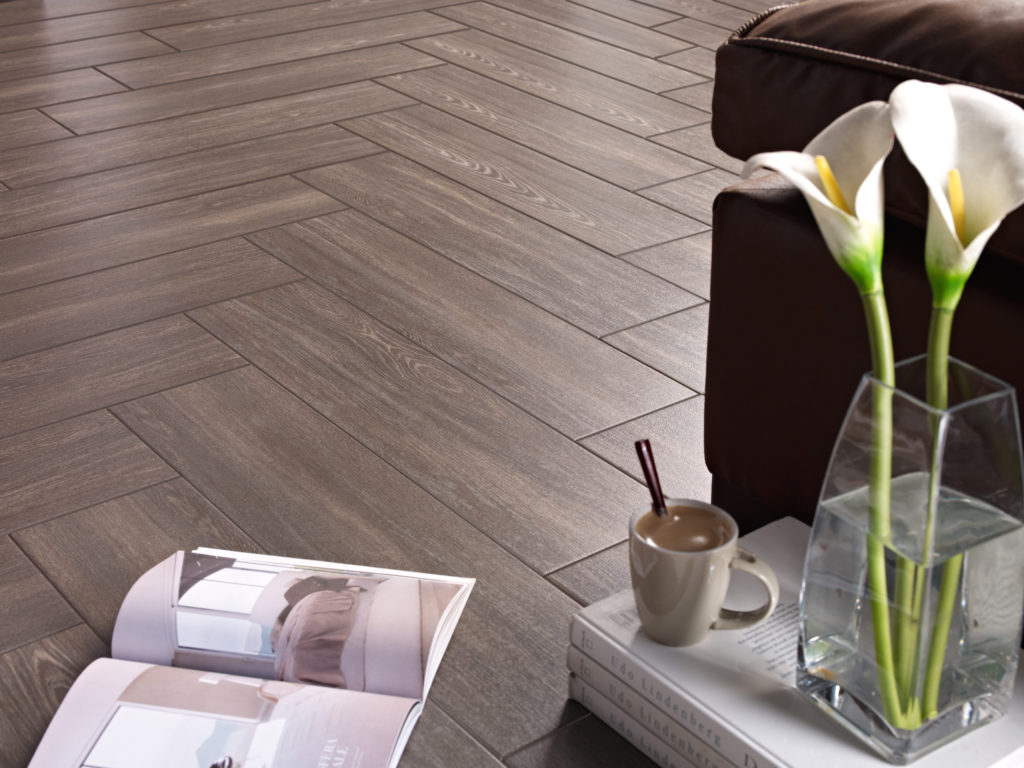
What is wood-look tile? Tile that looks like wood, basically.
The most self-explanatory fake wood flooring option around, wood-look tile is simply tile with the appearance of wood.
These types of floor tiles are generally made of ceramic or porcelain, and the wood grain is usually applied with high-resolution printing.
You may be thinking: “won’t printed wood look super fake?” Nope!
These tiles use scanned images of real wood. The more “faces,” or unique wood images per lot, the fewer repeats you’ll see. And of course, higher variation means a more realistic alternative.
Wood-look tile is easy to maintain
Porcelain tile is #1 on our list of most durable flooring options for a reason! Tile’s hard, dense composition resists scratches, scuffs, and chips.
And like many other types of tile, wood-look can be cleaned with mild detergents and water. Hardwood flooring, on the other hand, shows wear, requires wood-specific cleaners, and must occasionally be refinished.
Plus: the cost to refinish hardwood is not cheap. That’s something you don’t have to worry about with wood-look tile.
Wood-look tile is stain-resistant and water-resistant
If you’re considering any fake wood flooring, you’ll want to consider where you plan to install it. For example, if you’re contemplating tile vs. laminate, you should know that wood-look tile is a more water-resistant option.
Porcelain tile is also essentially non-porous, and thus more resistant to staining compared to solid hardwood. This is an excellent quality for kitchens or anywhere else you might spill your (third) glass of red wine.
Not that we’d know anything about that.
Tile is a sustainable fake wood flooring material
Unlike some other types, most types of tile emit no VOCs, which can have a negative impact on indoor air quality. If you’re the “go green” type, you’ll also be glad to know that wood-look tile can be recycled at special facilities at the end of its lifetime!
#6. Bamboo: “Fake Wood Flooring” That’s Actually a Grass
We just couldn’t let you go without mentioning a couple of amazing types of wood flooring that aren’t really wood at all!
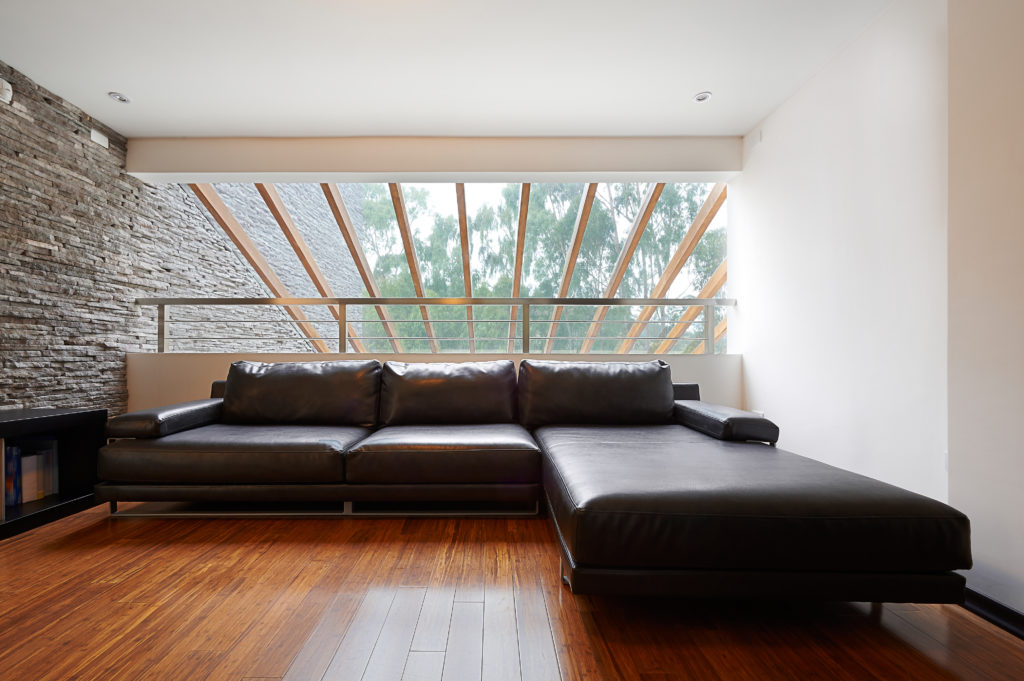
What is bamboo flooring made of?
So: bamboo. There is so much to love about bamboo. It’s no wonder that we’re seeing more bamboo flooring than ever! While bamboo looks and acts almost exactly like wood, bamboo is actually one of the largest members of the grass family.
Bamboo flooring is sustainable
Bamboo is often considered one of the most environmentally-friendly flooring options, as it can grow to maturity in just three to five years. Compare that to hardwood trees which can take over 40 years before they’re ready to harvest!
Just remember, quality bamboo flooring for the environment will always be certified by the Forest Stewardship Council or a similar third party. Beware of non-certified bamboo—it may be illegally or unsustainably harvested.
And the styles this option comes in are endless
The varieties and styles of bamboo are endless and include strand-woven, horizontal, vertical, and even engineered bamboo flooring (read up on engineered bamboo flooring pros and cons for more info on that).
You can finish your bamboo on-site, or buy it with its stain already applied like you can with prefinished hardwood flooring. You can even refinish bamboo flooring like you can with hardwood! There are so many things that make bamboo a great faux wood choice.
#7. Cork: “Fake Wood Flooring” Made of Tree Bark
Cork flooring actually comes from cork trees… but here’s the crazy thing—you don’t have to cut the tree down to harvest it.
Instead, cork is harvested from the bark of cork oaks, and some of the premium cork flooring is created from remnants of bark that was actually harvested to make wine corks. So there’s very, very little waste.
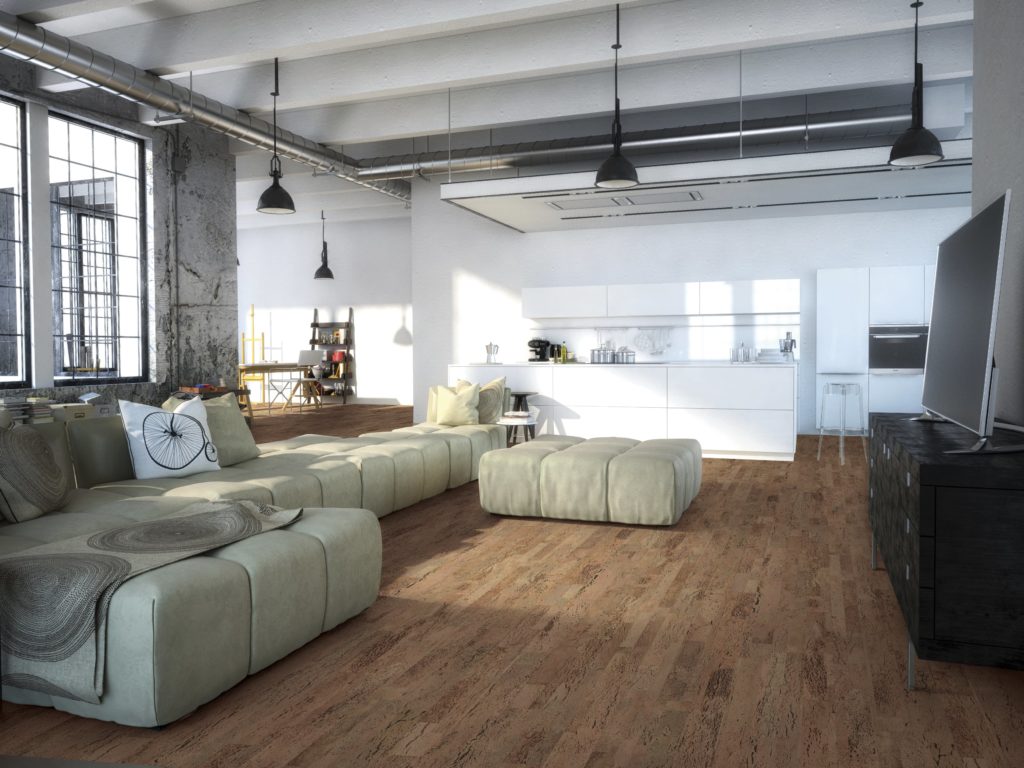
Won’t cork flooring just fall apart?
Nope. Cork is actually self-repairing, which makes it one of the best types of scratch-resistant flooring if you have dogs or kids. Plus, it’s manufactured in such a way that you’ll get plenty of years out of your cork floors—even the cork flooring from Lowe’s and Home Depot that’s of questionable quality.
What makes cork such a good floor?
In addition to being a more sustainable flooring option, cork flooring is naturally mold and mildew-resistant. Plus, it’s so easy on the joints, it may even give you a little spring in your step. Your local flooring source can offer great insights into this fantastic flooring option, and we recommend you check out some of the pros and cons of cork flooring.
Where can you put cork flooring?
If you have concrete subflooring or a hard underlayment, cork can go anywhere—because its softness really helps out with your joints!
Likewise, it’s a great solution for people debating between putting carpet or hardwood in the bedroom, since it can offer the look of wood with the softness of carpet. Are there disadvantages of cork flooring? Sure. But in our opinion, they’re far outweighed by the positives.
#8. Hemp: A Revolutionary Faux Wood Flooring Option
Yes, you read that right. Hemp flooring is one of the newest products on the market. Also known as “hemp hardwood”, it’s a durable, beautiful, eco-friendly flooring option. What’s not to love?
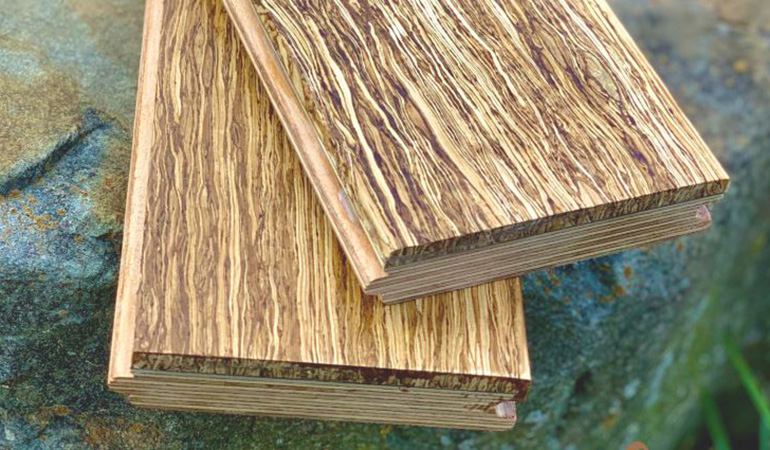
How is hemp wood made?
Hemp wood is made by binding hemp stalks (legal to grow in the United States since 2018) with a soy-based resin. This material is then cut into extremely durable (and gorgeous) 1/8-inch thick veneers. Like many of the best engineered wood flooring options on the market, these veneers are then bonded to high-quality plywood and finished.
What makes hemp such an eco-friendly option?
As a member of the grass family, hemp is fast-growing—really fast-growing. In fact, hemp can grow from a seed to a harvest-ready stalk in as little as 120 days. Compare that to the decades it takes for hardwoods like oak to grow to maturity!
Additionally, hemp absorbs 4x more carbon than trees do via a process called “carbon sequestration”. And hemp flooring produces more flooring per acre than a forest does!
How durable is hemp flooring?
The hardness of wood is generally measured by something called the Janka scale. Some of the hardest types of wood flooring in the world have Janka ratings of 3000 or more. But the flooring industry standard for hardness is oak, which measures a very respectable 1300 or so.
Hemp wood flooring measures a whopping 2750 on the Janka scale. That’s more than twice as hard as oak!
Who makes hemp flooring?
Right now, Kentucky-based Fibonacci LLC is the only mainstream producer of hemp flooring in the United States. However, we’ve seen more and more mentions of it pop up, so be sure to ask your local flooring store what they know about the world of hemp flooring!
Conclusion: All of These Options are Excellent
Fake wood flooring has come a long way since the early days, and it’s getting harder and harder to tell the difference between the best hardwood floors and their more affordable alternatives.
What’s the best faux wood flooring for you? That depends! Whether you want the real wood feel of engineered hardwood, the durability of wood-look tile, the DIY ease of laminate, or the versatility of vinyl, there’s really no bad option.
Where can I find fake wood flooring?
No matter which of these excellent flooring options interests you, a local flooring expert is your best bet to find the perfect flooring fit. Check out a flooring store near you to get a recommendation and quote today.
About The Author

Kelly Pitts
March 26, 2020
Kelly is a freelance lifestyle and wellness writer. Her guilty pleasures are coffee and celebrity gossip. When she’s not hard at work creating content, you can find her traveling the world, being a crazy fish mom, and cooking vegan food.



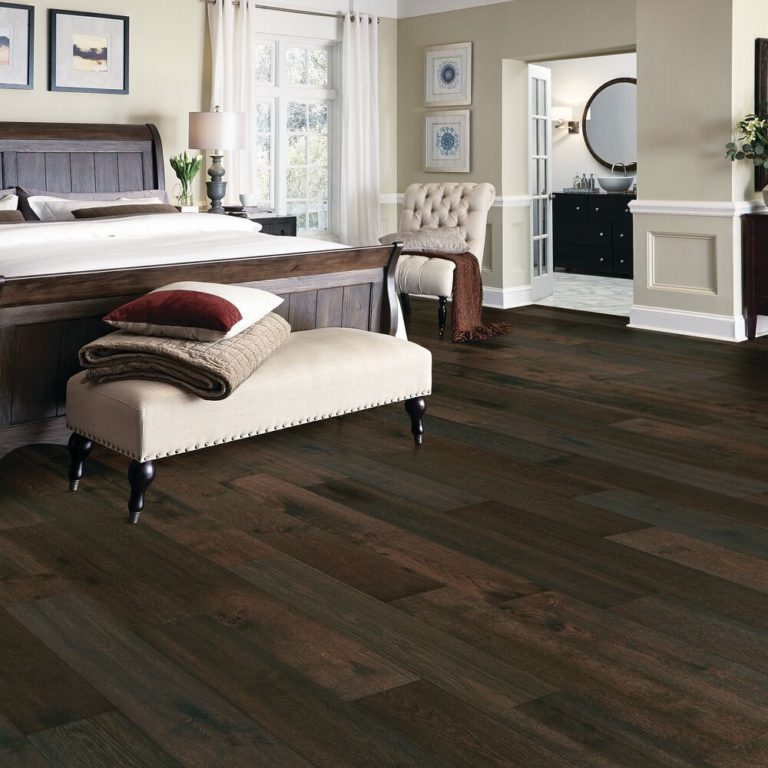
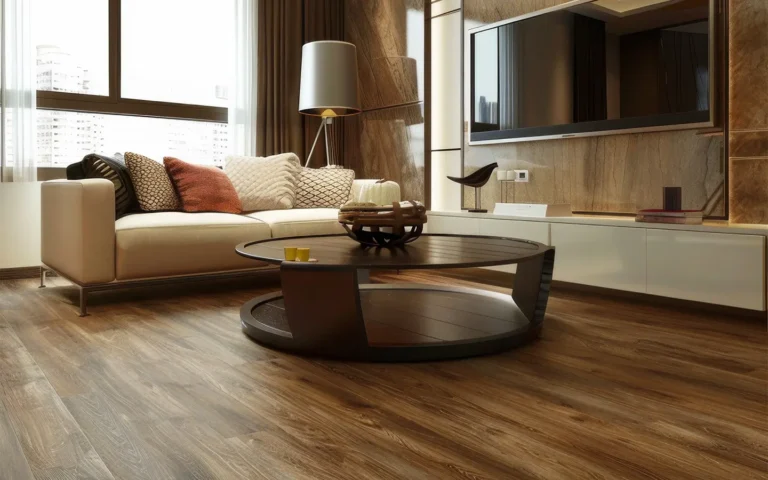

2 comments
Nicholas Barnett
I was thinking of installing vinyl plank flooring for my home. But I did not have any experience with the price. That’s why I was searching for some suggestions about that. In your article, you shared some relevant information about the pricing and usage process that will be beneficial for me. Thanks for sharing!
Bo Arnold
Hi Nicholas! We’re glad to hear our article helped—best of luck on your floor buying journey!